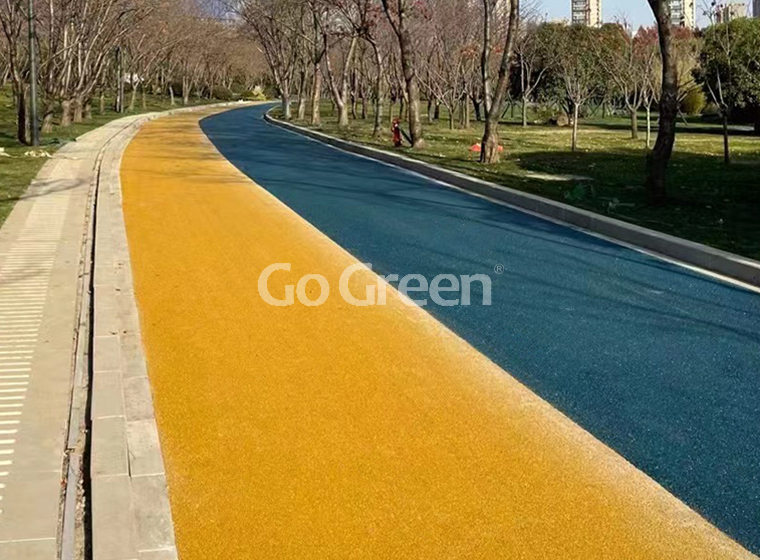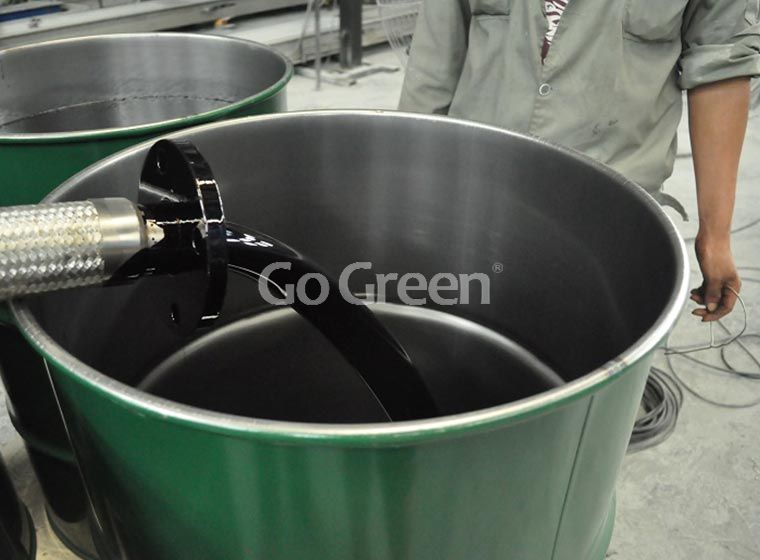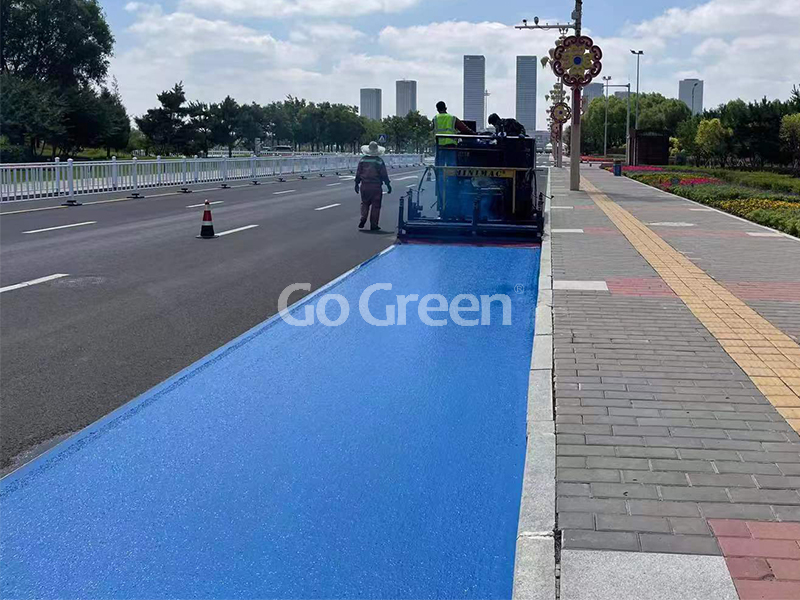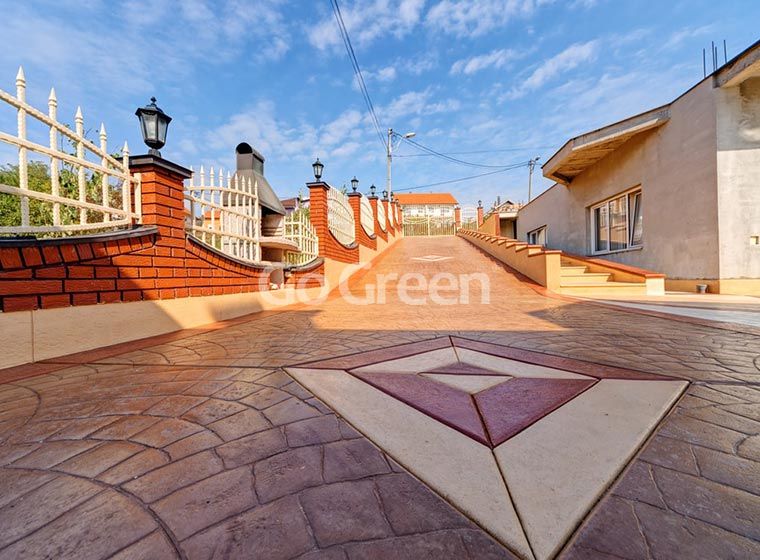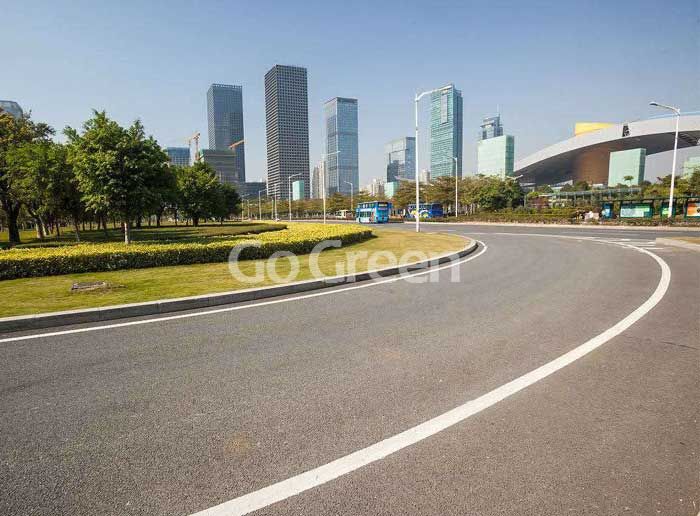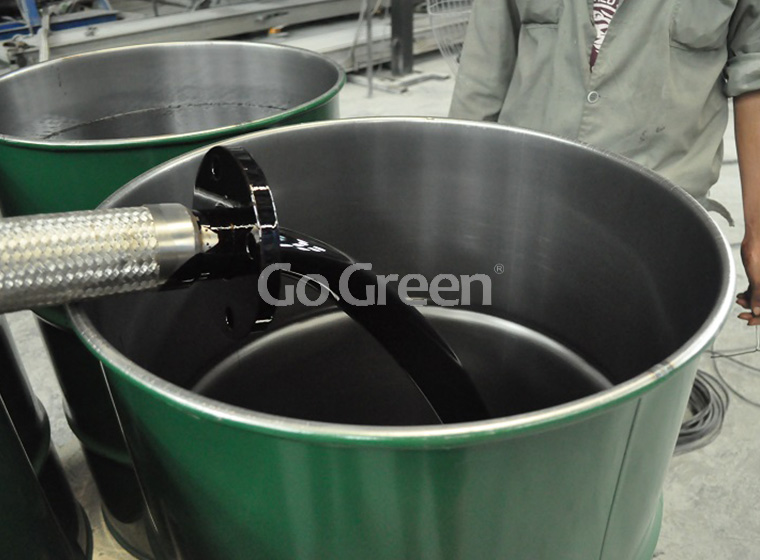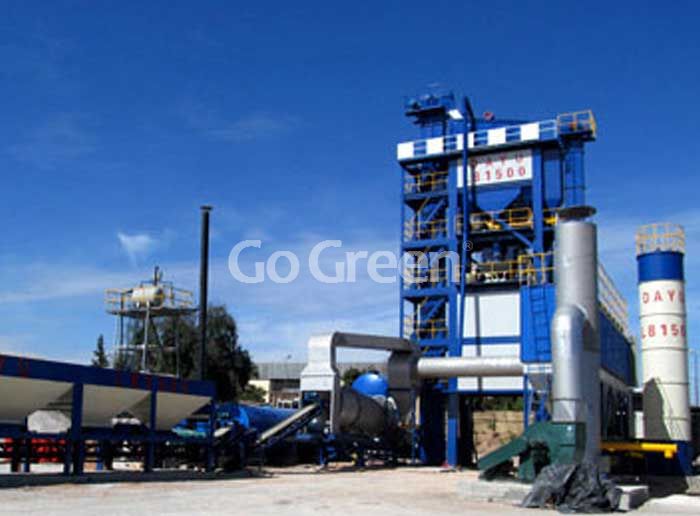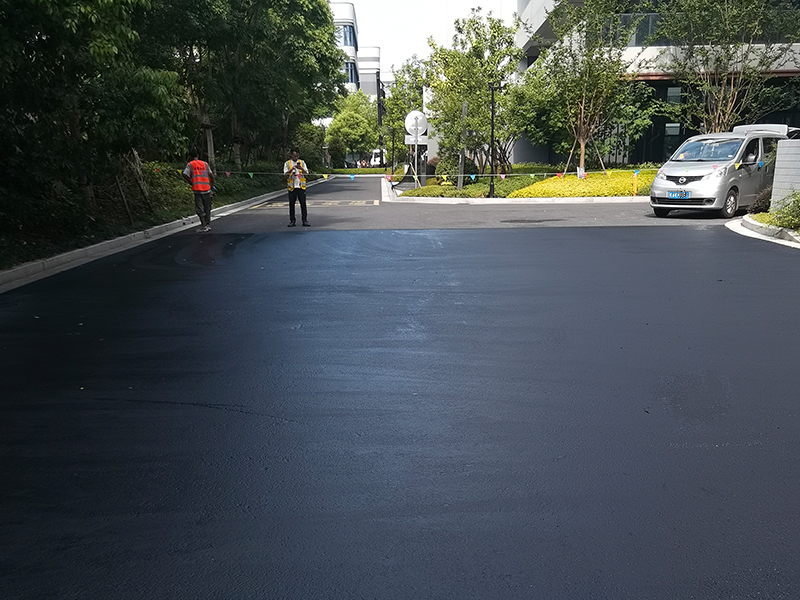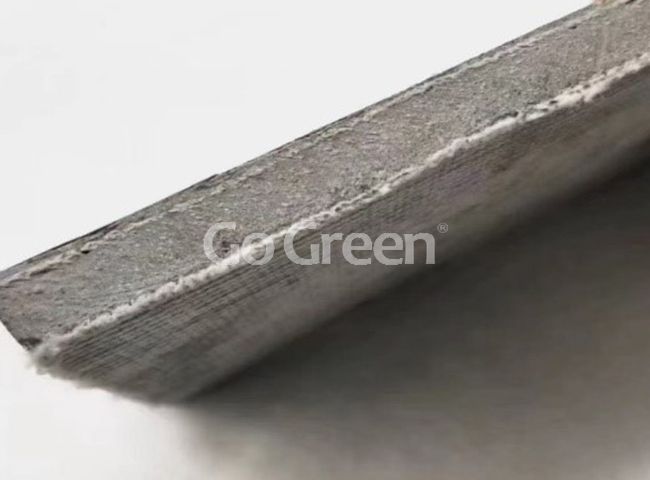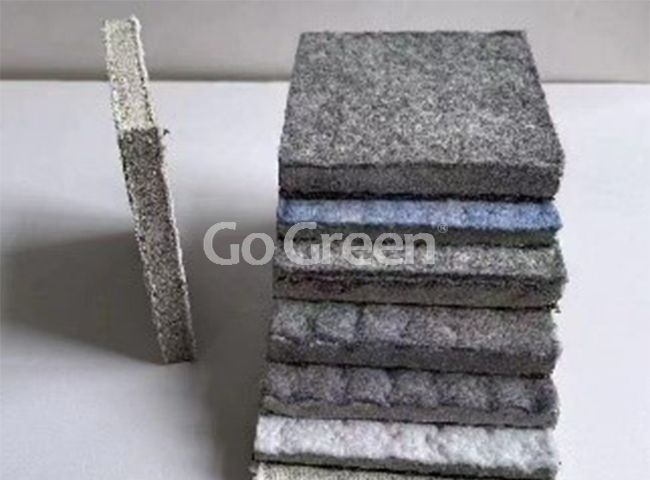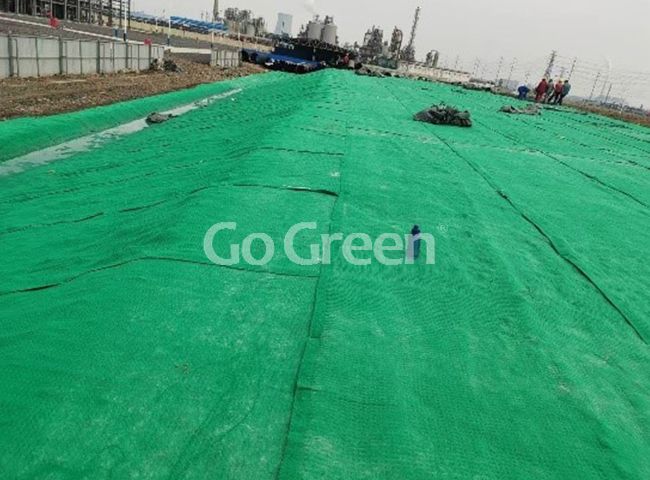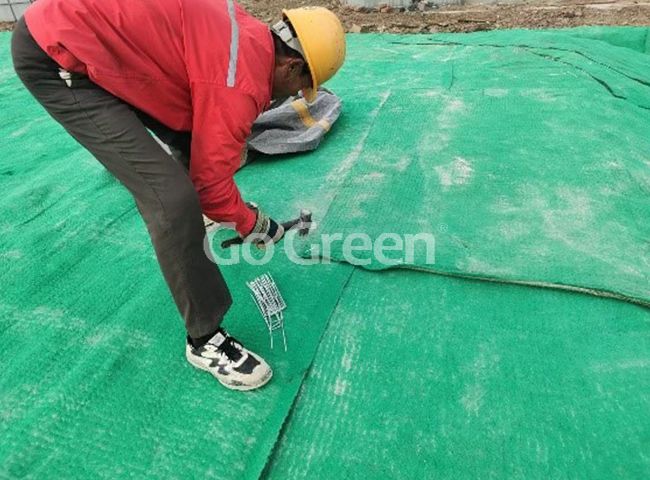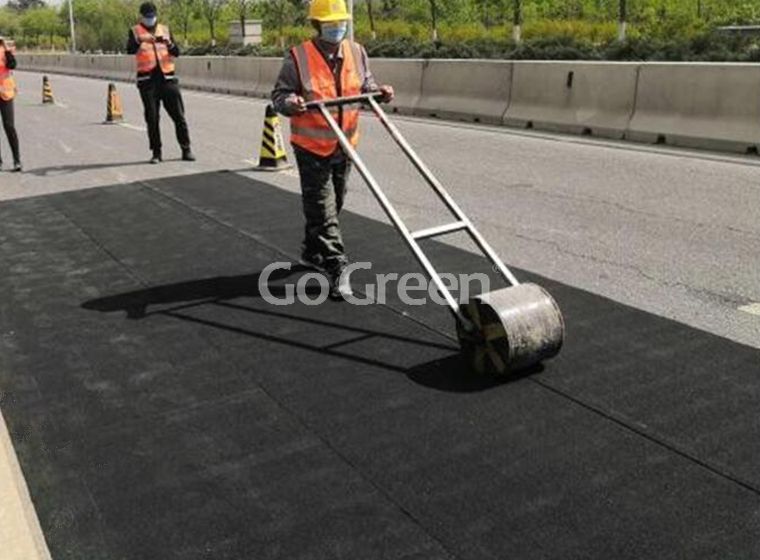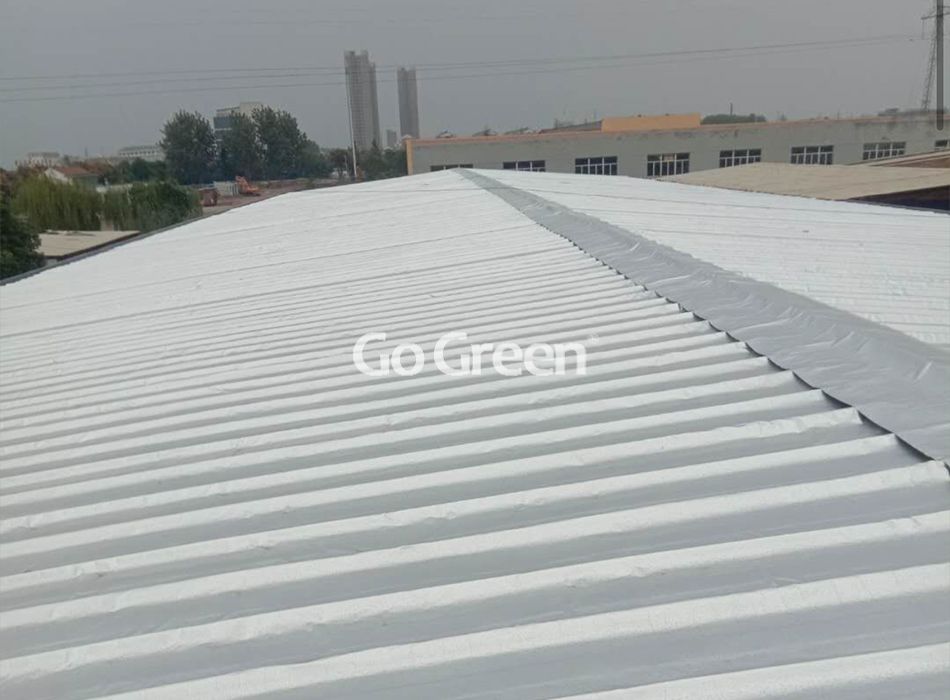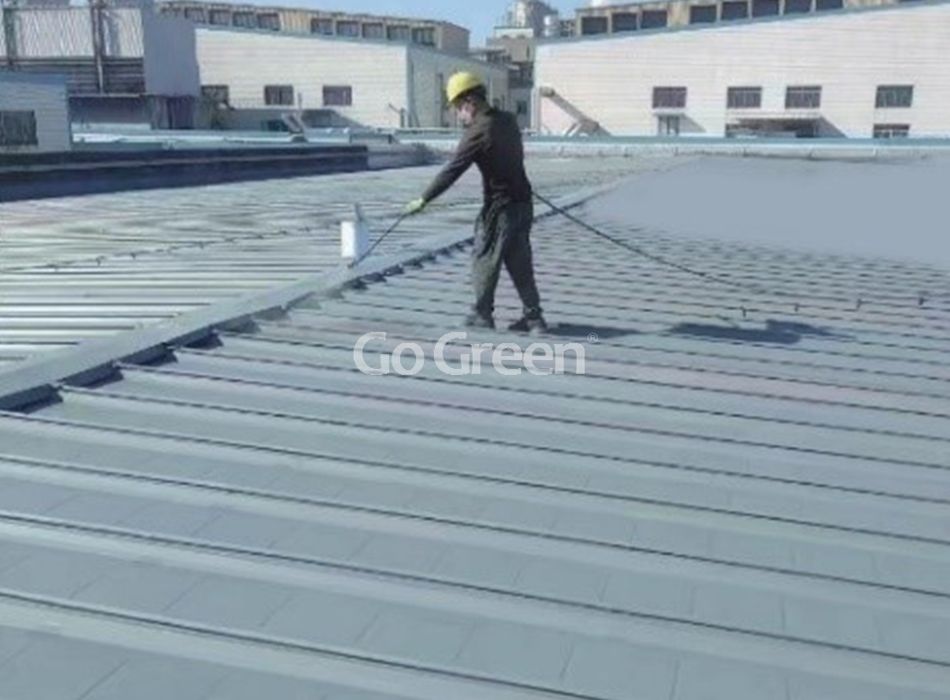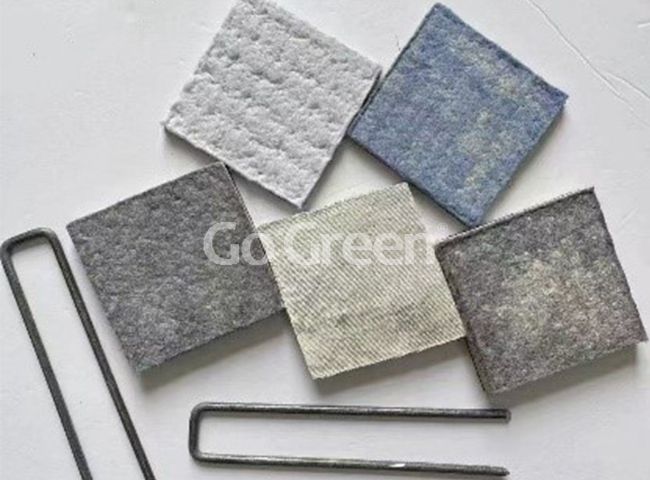Go Green concrete canvas is an innovative flexible composite material, meticulously composed of a fabric base layer, a concrete structural layer, and a high-strength reinforcement layer. Upon contact with water, it rapidly hydrates to form a high-strength, impermeable concrete structure. Combining the flexibility of textiles with the durability of concrete, it serves as an alternative to traditional concrete construction methods and is widely used in water conservancy, infrastructure, environmental protection, and emergency engineering projects.
Structural Composition
1. Fabric Base Layer: A three-dimensional fiber composite structure woven from polyethylene / polypropylene filament, providing flexibility and tear resistance.
2. Concrete Structural Layer: Composed of calcium aluminate cement and quartz sand, forming a high-density cured layer upon hydration.
3. High Strength Reinforcement Layer: A polyester fiber-reinforced layer that enhances tensile strength and prevents cracking.
4. PVC Liner: A polyvinyl chloride coating on the bottom surface, ensuring complete waterproofing and impermeability.
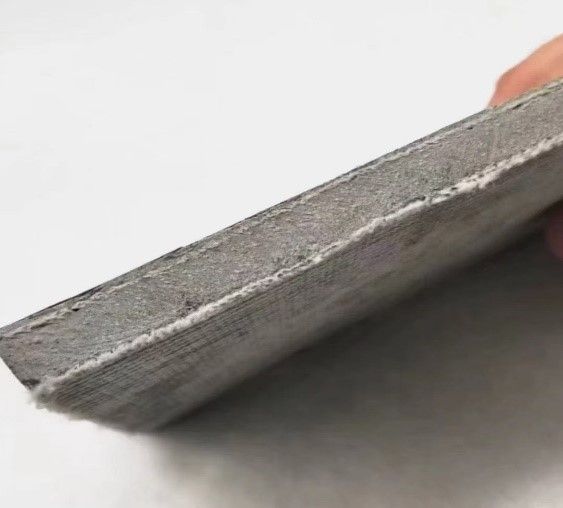
The fabric base layer serves as a protective layer, effectively safeguarding the concrete to ensure complete hydration while maintaining its integrity under prolonged exposure to wind and sunlight. The concrete structural layer is meticulously formulated with high-strength cement, quartz sand, and curing enhancers. Through the hydration reaction, it forms a high-strength solidified material that provides robust structural support while offering excellent impermeability and curing performance. Additionally, the high-strength reinforcement layer, woven from high-strength elastic polyester material, exhibits outstanding tensile strength, elasticity, and resistance to corrosion, acids, alkalis, and aging. It plays a crucial role in reinforcement, crack prevention, and tensile resistance in engineering applications.
Core Performance Features
1. High Strength and Durability:
Compressive strength ≥ 20 MPa, freeze-thaw resistance ≥ 50 cycles, suitable for environments ranging from -5°C to 50°C.
UV-resistant and resistant to acid and alkali corrosion (pH 3-12), with a lifespan exceeding 50 years (without external damage).
2. Multifunctional Protection:
Waterproof & Impermeable: The PVC liner and dense structure ensure zero permeability.
Fire -Resistant & Flame-Retardant: Meets European B-s1, d0 fire resistance rating, self-extinguishing without sustaining combustion.
Erosion-Resistant: Suitable for applications exposed to water flow impact, such as riverbanks and seawalls.
3. Flexibility & Adaptability:
Can bend and conform to complex terrains (e.g., trenches, vertical surfaces) and supports double-curved surface designs.
Construction Advantages:
1. Cost Effective: Concrete Canvas has relatively low material costs, and its simple and rapid installation significantly reduces labor and time expenses.
2. Long Service Life: Designed with high-strength elastic reinforcement, the flexible structure prevents cracking due to uneven ground settlement, ensuring long-term durability
3. Easy Installation: Requires minimal ground preparation and is not affected by weather conditions, allowing construction to proceed in rainy or cold seasons without seasonal limitations.
4. Aesthetic & Eco-Friendly: Available in customizable colors, enabling projects to integrate seamlessly into landscapes, promoting sustainability and environmental harmony
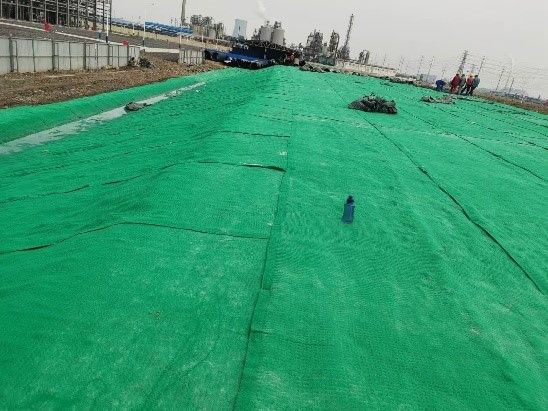
Construction
During installation, the concrete canvas can be laid either manually or using machinery. It should generally be installed from top to bottom in a longitudinal direction.
Key Construction Guidelines:
• Overlap Control: Overlapping width should be within 15 cm, and double-sided adhesive tape should be used for bonding.
• Anchoring Requirements: The longitudinal seams, connections to slopes, and transverse edges must be anchored to ensure stability and safety.
Seam Treatment Options:
• Use 5 cm-wide double-sided adhesive tape, mortar, or screws to secure the seams firmly.
• Fix the concrete canvas to the slope using U-shaped nails, expansion bolts, or anchor rods, depending on the slope structure.
Post-Installation Curing:
• Immediately after installation, uniformly spray water to initiate hydration, ensuring full saturation in a single application.
• Conduct a second round of curing within 24–48 hours to enhance the hardening effect and ensure durability.
Technical Specification
| Parameter | Options |
| Thickness | 6-20mm (customizable) |
| Size | Standard roll: 1m × 10m; customizable (maximum width: 4m) |
| Weight | 6-20kg/㎡ (varies with thickness) |
| Color | White / Green / Multicolor (customizable) |
| Shelf Life | 1 year in original packaging; 6 months in a dry environment after opening; |
Application Range
| Field | Typical Scenarios |
| Water Conservancy | Canal lining, reservoirs, riverbank protection, seawater aquaculture ponds |
| Infrastructure | Tunnel waterproofing, road subbase, underground utility tunnels, cable trench protection |
| Environmental Protection & Restoration | Wastewater treatment ponds, mine rehabilitation, landfill impermeability |
| Emergency Engineering | Temporary flood control levees, post-disaster reconstruction |
| Industrial Facilities | Corrosion-resistant flooring for chemical plants, fire barriers for power plants |
Thickness: 6-20mm (customizable)
Standard roll: 1m × 10m; customizable (maximum width: 4m)


